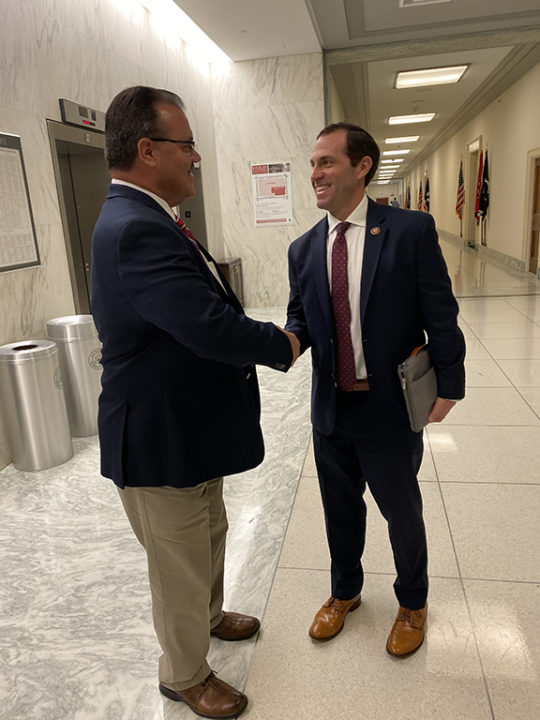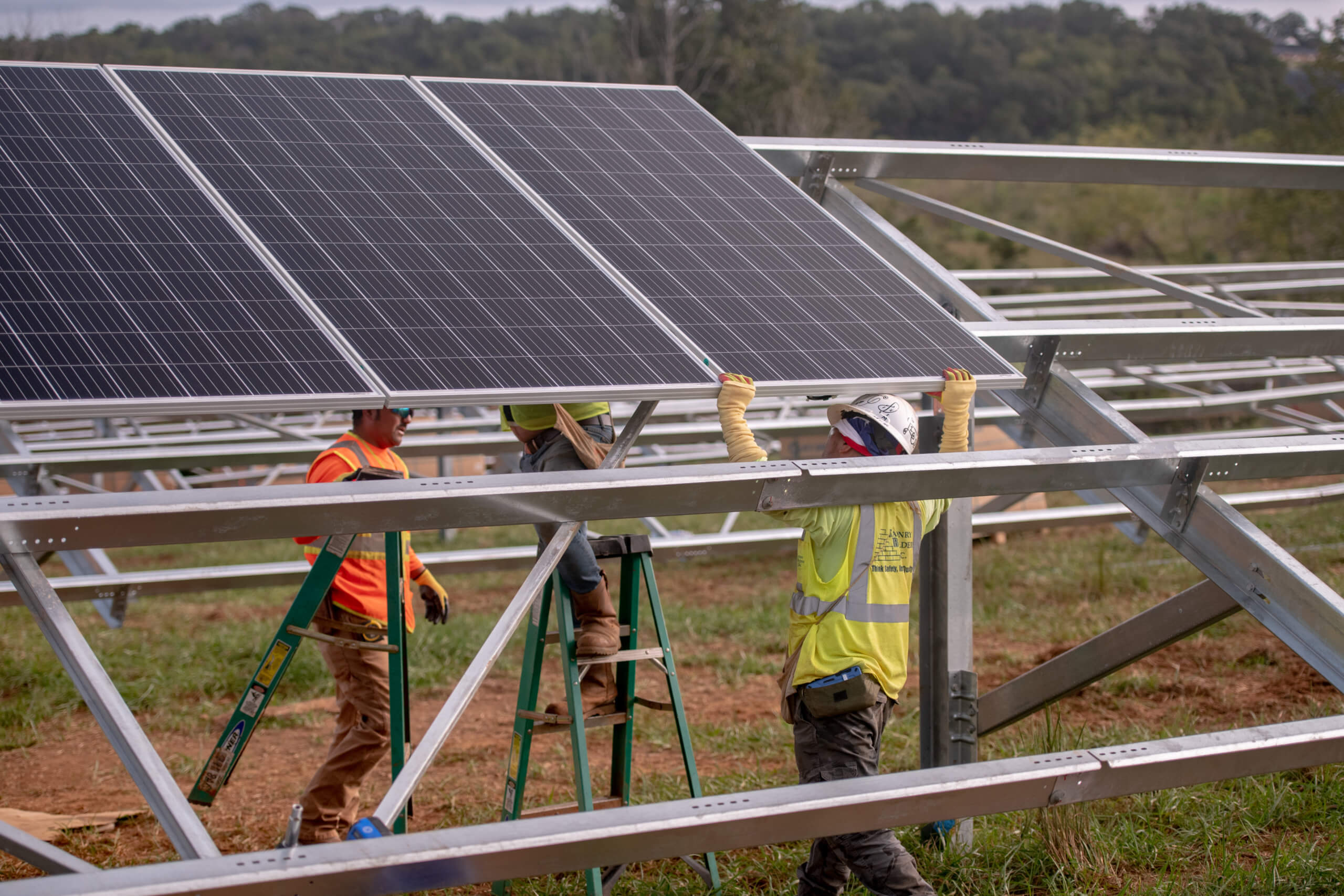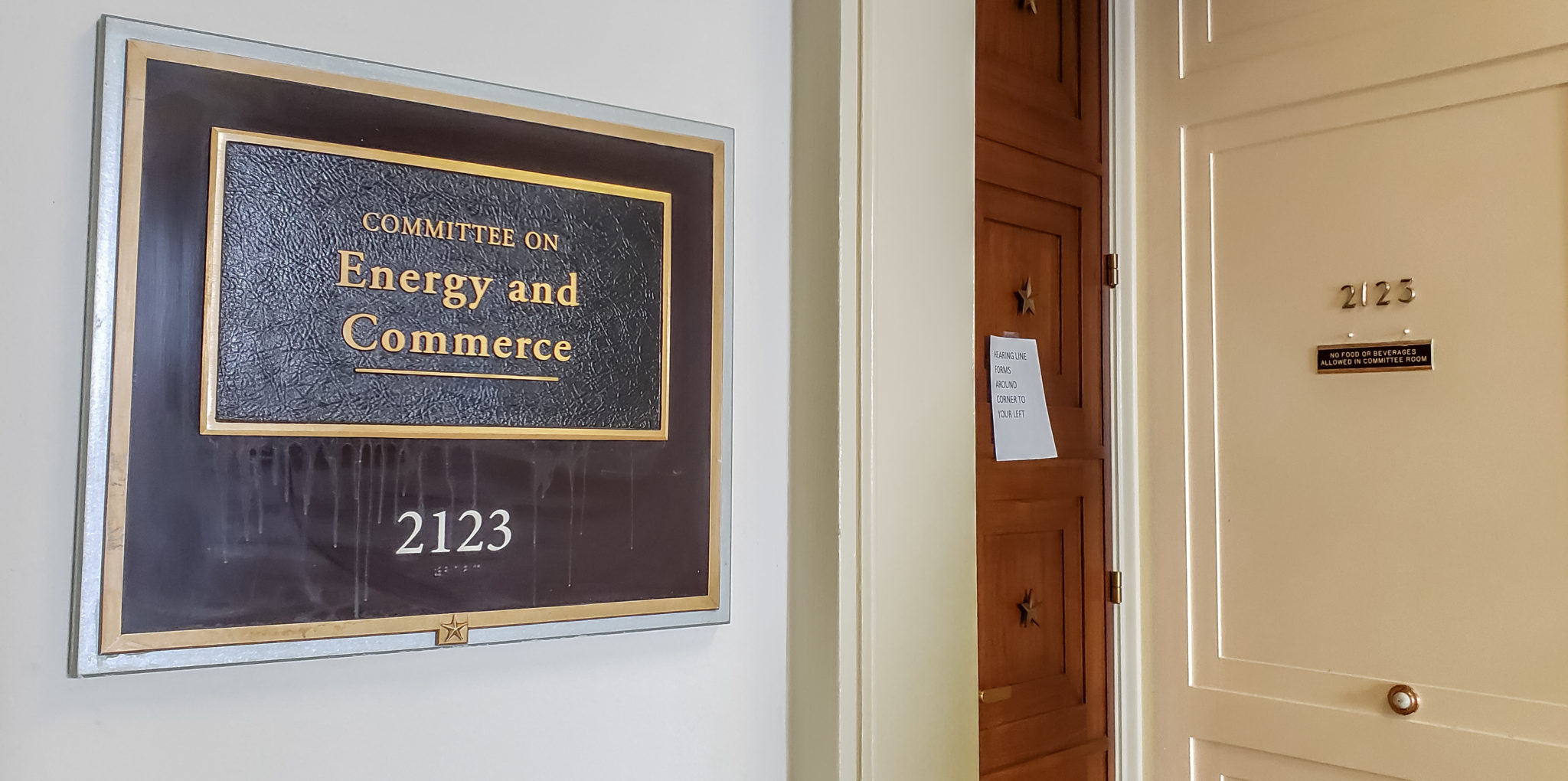Apex Outlines Opportunities and Challenges for Clean Energy Workforce on Capitol Hill
Apex Vice President Neil James Testifies Before U.S. House Subcommittee
As the utility-scale wind and solar industries continue to soar, new and expanded career opportunities are taking shape nationwide. Wind turbine technician is now widely recognized as one of the fastest-growing job segments in the country, but it represents only one of the career paths developing throughout the clean energy sector from project origination to operations, including the dramatic expansion of a new industrial and high-technology supply chain.
Neil James, vice president of operations, maintenance, and monitoring at Apex Clean Energy, was asked to testify on Capitol Hill about Apex’s approach to and role in creating the clean energy workforce. His testimony appears below.
Testimony of Neil James, Vice President of Operations, Maintenance, and Monitoring, Apex Clean Energy
United States House of Representatives
Committee on Small Business
Subcommittee on Innovation and Workforce Development
Hearing on “Creating the Clean Energy Workforce”
October 29, 2019
Chairman Crow, Ranking Member Balderson, and Members of the Subcommittee on Innovation and Workforce Development, thank you for the opportunity to testify on the topic of creating the clean energy workforce.
My name is Neil James, and I am the Vice President of Operations, Maintenance, and Monitoring at Apex Clean Energy. I have more than 38 years of experience in electrical utilities, alternative energy, and high-voltage operations and bring a unique perspective on workforce development as an operations and maintenance supervisor with Apex.
My remarks today will focus on the U.S. wind industry’s rapid growth and the opportunities and challenges we face in recruiting, training, and developing the necessary workforce to meet the increased demand for an expanded clean energy economy. I will also touch on Apex’s approach to workforce development.
A bit of background on my company: Apex Clean Energy develops, constructs, and operates utility-scale wind and solar power facilities across North America. Our mission-driven team of more than 200 renewable energy experts uses a data-focused approach and an unrivaled portfolio of projects to create solutions for the world’s most innovative and forward-thinking customers. Headquartered two and a half hours from here, in Charlottesville, Virginia, Apex’s work has led to over $7 billion in clean energy investment—equal to 5 gigawatts of clean energy being added to the grid—and we operate nearly 2 gigawatts from our remote monitoring facility, also in Charlottesville.
Apex has been built with a singular focus: to accelerate the shift to clean electricity.
Overview of the Wind Industry in the United States
The U.S. wind industry is made up of manufacturing, construction, and operations and maintenance workers; developers; engineers; and business-trained individuals. Currently, the industry comprises more than 114,000 workers across all 50 states. Industry experts predict that by 2020, the industry will support nearly a quarter-million American jobs. Wind turbine technician is the second-fastest-growing job in the country; only solar photovoltaic installer ranks higher. The wind industry employs more Americans than nuclear, coal, natural gas, or hydroelectric power generation [PDF].
The benefits of wind energy are widespread, with wind farms and manufacturing facilities spanning all 50 states. We tend to see most of the operating projects, with more to come, in the West, Texas, the Great Plains, and large sections of the Midwest. There is a significant manufacturing presence in both the Southeast and the Midwest, and with the emergence of offshore wind, we expect to see a localized and expansive manufacturing presence on the East Coast.
If I can leave you with just one message, it’s that this industry isn’t just about creating jobs—it’s about building careers.
Apex Approach to Creating the Clean Energy Workforce
At Apex, we have five core company values: Entrepreneurship, Integrity, Professionalism, Safety, and Sustainability. When we recruit new employees, we look for individuals who embody these core values, and we strive to live these values both professionally and personally.
I want to take one minute to provide an example of what this looks like at Apex. My colleague, Marco Pineda, came to the United States from Honduras as a small boy. Marco went to college and received a degree in accounting, but at the time, work was scarce, so he took a job on an oil field. Not long after, he recognized an opportunity in clean energy near his home in south Texas and began working for Vestas as a wind turbine technician and site manager. In 2015, Apex brought him on to manage our Cameron Wind facility. He has since been promoted to regional manager, overseeing operations for nine wind and solar farms across the U.S. and Canada. From day one at Apex, Marco has exemplified our core values. Earlier this year, he became a U.S. citizen.
Apex also firmly believes that veterans bring some of the best talent to the wind business. The skills they learn defending our country transition well to positions in clean energy. At Apex, our company is veteran-led at every level—from our CEO Mark Goodwin, who served as a pilot in the Navy—to asset managers at our Remote Operations Control Center (or “ROCC”) in Charlottesville.
The ROCC is where we oversee all operating projects under our management. This facility runs 24/7/365, with our data systems processing an average of 432 million data points per day to optimize these wind farms. Though computer algorithms dispense all this information, we rely on our workforce to assess, analyze and react to it. Our team needs to be able to not only respond to the activity within the ROCC, but also relay that information to colleagues in the field.
These are high-intensity, stressful situations that often require working proactively to optimize wind farm performance and troubleshoot unexpected problems that may not be found in a manual. Veterans have the mindset to excel in these situations.
Opportunities and Challenges for Meeting the Growing Demand
Meeting the growing demand of renewable energy will require additional investment in finding the necessary workforce. We must create more opportunities to educate and train individuals for careers in the clean energy economy.
Current gaps we see in the workforce market include the need for additional skills in the mechanical, electrical, and computer fields; SCADA communications and fiber optics; and high-voltage systems. Technical schools provide a great basis for an associate degree in these disciplines, and a few examples of such schools across the country are Texas State Technical College, Iowa Lakes Community College, Columbia Gorge Community College, and Kalamazoo Valley Community College.
But we need more schools to offer these training opportunities if we’re going to meet the demand. Potential ways to achieve this include creating greater awareness of the opportunity, expanding public-private partnerships, and building out incentive structures for schools to initiate these programs. Where schools have programs create incentives for them to collaborate more broadly with industry. Also, members can support the bipartisan Wind Workforce Modernization and Training Act, introduced by Senators Ernst and King.
Conclusion
This is an exciting time to be in the clean energy sector. The industry is strong today, and the future looks even stronger. And though we see challenges in establishing the necessary workforce to aid the transition to a cleaner energy economy, the opportunity is far too great for us to fall short.
If I can leave you with just one message, it’s that this industry isn’t just about creating jobs—it’s about building careers.
Thank you again for the opportunity to testify, and I look forward to answering any questions.


